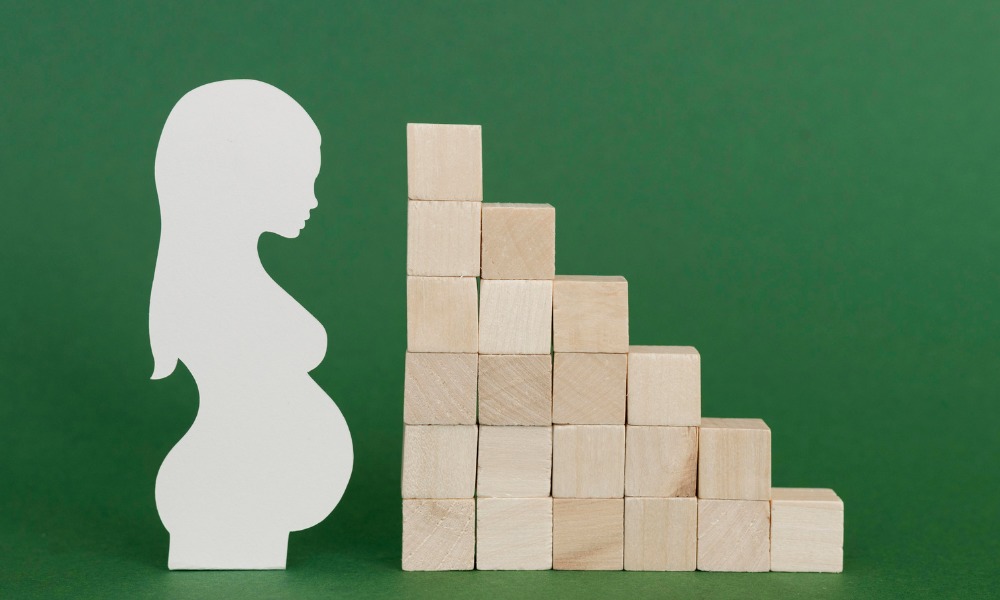Recently, Japan has experienced a sense of crisis due to the ongoing decrease in the fertility rate, with PM Kishida announcing that the Japanese economy and society will be devastated if this issue is not resolved with urgency. One of the key factors cited for the birth decline is delayed marriage among young people. It is believed that pursuing higher education and careers among women is causing them to remain unmarried in their twenties. Subsequently, it is said that the decreasing fertility rate is closely linked to the rise in women with higher education levels specifically. Although on paper, there is a negative correlation between birth rate and education in women, its interpretation requires deeper analysis to understand the structural issues behind this phenomenon.
Why Higher Education Correlates with Declining Birth Rates Globally

Image credits: Canva
Research indicates that as a woman’s level of education increases, the number of children she is likely to have decreases. This relationship is significant because it may lead to more resources and improved health outcomes for both mothers and children due to fewer children per woman and delayed childbearing. However, it is unclear to what extent this relationship is causational or simply correlational.
According to the World Bank, the reason why the education level of women affects fertility can be explained by the economic theory of fertility. Women with higher education levels have a greater financial incentive to limit the number of children they have, as the opportunity cost of bearing children is higher in terms of lost income. Another theory, the household bargaining model, suggests that women with higher education levels have more financial independence and, therefore more bargaining power, which includes the ability to negotiate the size of their families.
However, in societies where men and women have distinct roles in the workplace and home, many women feel that marriage will limit their ability to pursue interests outside their role as a wife and mother.
Japanese Context

Image credits: Canva
In Japan, marriage is perceived as a limiting and restrictive social construct, particularly for women. The traditional expectations for men and women in their roles as fathers and mothers and the lack of support for working mothers contribute to the low fertility rate. The traditional corporate structure in Japan also plays a role, as the expectation for total commitment and self-sacrifice within companies leaves little room for working men and women, but especially women, to raise a family. This results in many Japanese women choosing careers over children.
Japan’s decreasing birthrate can be attributed to the constraints imposed by societal expectations of gender roles in the home and in the workplace. Contemporary Japanese women are becoming more determined to not sacrifice their careers for marriage and children. For women with career aspirations, the cost of marriage to their professional goals is too great. These rigid expectations make women feel that they must choose between one all-encompassing role. With the benefits of higher education and being single, many young Japanese women are hesitant to surrender their newfound independence and conform to the traditional roles of wife and mother.
Another often overlooked reason for Japan’s birth rate decline is the lack of economic opportunities for young individuals against the backdrop of rising irregular employment, particularly for men. In a society where men are expected to financially support families, a shortage of well-paying jobs may lead to a demographic of men who refrain from marriage and child-rearing due to financial insecurity and similar concerns among potential partners. Most women will not want to settle down with a man who does not have the stability and benefits a regular job can provide. This is further enforced by the men as the breadwinner and women as the caretaker stereotype that is rigidly enforced in Japan.
Women’s Perspectives

Image credits: Canva
It is worth looking into how Japanese women responded to societal pressure to have more children despite a lack of support for raising a family. According to this survey, they were unfazed and not surprised by the declining birth rate, as they understand the lack of suitable conditions for having and raising multiple children. Many women have expressed that they recognize the underlying issues causing the decline, but men do not, and this highlights the different perspectives between the sexes. Their perspectives differ significantly from those of government officials, financial leaders, and the media.
For the past century, Japanese women have traditionally followed government directives regarding population growth through childbirth. However, with the ongoing debate surrounding the falling birth rate, there appears to be a shift in women’s attitudes, with women refusing to bring children into a world that diminishes their right to exist outside of the role of mother.
The Challenge of Declining Birthrates
The Japanese government understands the urgency of the issue, but the rigid socioeconomic and gender norms in the country require well-thought-out policies to bring about mindset shifts in society, culture and the workplace that can facilitate behaviour changes in women’s fertility.
Possible solutions will be discussed in another article coming soon.
Related Articles
- A Critical Look into Japan’s Womenomics
- The Plight of Single Working Women in Japanese Society
- Impacts of Japan’s Population Decline and Possible Solutions
- Employee Benefits: What to Expect at a Japanese Company
Featured image credits: Canva






